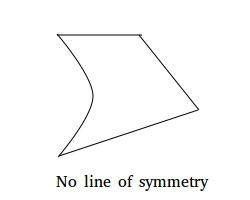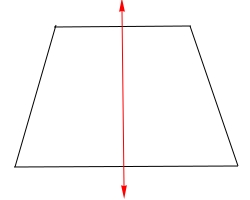Line symmetry
A figure has line symmetry if it can be folded along a line so that one half of the figure is a mirror image of its other half. You can also say that the figure has reflectional symmetry.
The reflection line is called the line of symmetry. A figure can have no line of symmetry, one line of symmetry, or more than one line of symmetry.
Shapes with no line of symmetry
A shape with no line of symmetry is called asymmetrical shape.
The shape below has no line of symmetry since you can never fold this shape along a line of symmetry so that half of it is a mirror image of the other half.
What are some examples of asymmetrical shapes?
The letter F, the letter P, a scalene triangle and a parallelogram are examples of asymmetrical shapes with no line of symmetry.
Shapes with 1 line of symmetry.
A shape with at least one line of symmetry is called symmetrical shape.
The isosceles trapezoid shown below has only one line of symmetry. The red line is the vertical line of symmetry and it breaks down the trapezoid into two halves that are identical.
The left and right halves of the isosceles trapezoid are reflections of each other. It is like using the red line as a mirror. The other way to look at it is to say that if you use a scissor and cut the figure into two pieces along the red line, you will end up with two identical halves.
What are some examples of symmetrical shapes with just 1 line of symmetry?
An isosceles triangle, a kite, and a semicircle are examples a symmetrical shapes with only 1 line of symmetry. The letters A, B, C, D, E, and M of the English alphabet have also exactly one line of symmetry as shown below.

Shapes with more than 1 line of symmetry.
The square shown below has 4 lines of symmetry. We show this with 2 red lines of reflection and 2 blue lines of reflection.
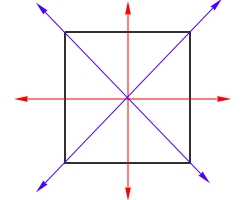 Four lines of symmetry
Four lines of symmetryNotice that the square has the following three types of lines of symmetry
- Horizontal line of symmetry
- Vertical line of symmetry
- Diagonal line of symmetry
A rectangle has 2 lines of symmetry (horizontal and vertical line of symmetry). Unlike the square, the rectangle is not symmetrical along its two diagonals.
The letters H, I, O, and X have two lines of symmetry. Notice that the letter O is not a circle. It is more like an oval, slightly longer along its vertical axis.
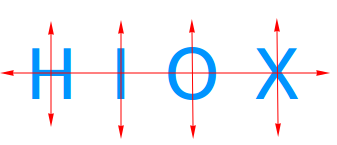
An equilateral triangle, which has 3 sides, has 3 lines of symmetry
A square, which has 4 sides, has 4 lines of symmetry
A regular pentagon, which has 5 sides, has 5 lines of symmetry
A regular hexagon, which has 6 sides, has 6 lines of symmetry
In general, the number of lines of symmetry a regular polygon has is equal to the number of sides the regular polygon has. Therefore, a regular n-gon has n lines of symmetry. Notice that all sides and all angles are equal in a regular polygon.
Line symmetry of a circle
What will happen if a regular polygon has a great number of sides such 1,000 sides, 10,000, or even 1 million sides? It will look more and more like a circle.
1000 sides will give 1000 lines of symmetry
10000 sides will give 10000 lines of symmetry
1 million sides will give 1 million lines of symmetry
Suppose your regular polygon has an "infinite number of sides", it will almost or pretty much look like a circle with an infinite number of lines of symmetry.
A circle has an infinite number of lines of symmetry that go through the center of the circle. In fact, among all geometric shapes, the circle is the only shape with infinite lines of symmetry.
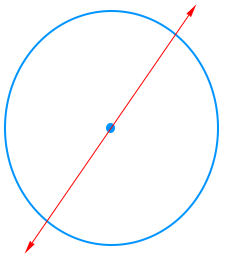
The circle above shows only 1 such line of symmetry going through the center.
